
23 Results



Students build a 9 M X 9 M model of an animal or plant cell with cell organelles inside it and give cell tours to Life Science students. May be done as two large groups, or a whole class project.
- Subject:
- Biology
- Life Science
- Material Type:
- Activity/Lab
- Assessment
- Lesson Plan
- Provider:
- Science Education Resource Center (SERC) at Carleton College
- Provider Set:
- Pedagogy in Action
- Date Added:
- 12/09/2011

This activity is designed to help students understand the structures and functions of the cell by building a model.
- Subject:
- Biology
- Life Science
- Material Type:
- Activity/Lab
- Provider:
- Science Education Resource Center (SERC) at Carleton College
- Provider Set:
- Pedagogy in Action
- Author:
- Karen Weisbrich
- Date Added:
- 08/10/2012

Biology is designed for multi-semester biology courses for science majors. It is grounded on an evolutionary basis and includes exciting features that highlight careers in the biological sciences and everyday applications of the concepts at hand. To meet the needs of today’s instructors and students, some content has been strategically condensed while maintaining the overall scope and coverage of traditional texts for this course. Instructors can customize the book, adapting it to the approach that works best in their classroom. Biology also includes an innovative art program that incorporates critical thinking and clicker questions to help students understand—and apply—key concepts.
- Subject:
- Biology
- Life Science
- Material Type:
- Full Course
- Provider:
- Rice University
- Provider Set:
- OpenStax College
- Date Added:
- 08/22/2012

- Subject:
- Biology
- Life Science
- Material Type:
- Unit of Study
- Provider:
- Rice University
- Provider Set:
- OpenStax College

Biology is designed for multi-semester biology courses for science majors. It is grounded on an evolutionary basis and includes exciting features that highlight careers in the biological sciences and everyday applications of the concepts at hand. To meet the needs of today’s instructors and students, some content has been strategically condensed while maintaining the overall scope and coverage of traditional texts for this course. Instructors can customize the book, adapting it to the approach that works best in their classroom. Biology also includes an innovative art program that incorporates critical thinking and clicker questions to help students understand—and apply—key concepts.
- Subject:
- Applied Science
- Material Type:
- Module
- Date Added:
- 07/10/2017
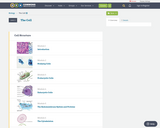
- Subject:
- Biology
- Life Science
- Material Type:
- Unit of Study
- Provider:
- Rice University
- Provider Set:
- OpenStax College
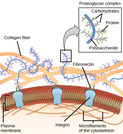
By the end of this section, you will be able to:Describe the extracellular matrixList examples of the ways that plant cells and animal cells communicate with adjacent cellsSummarize the roles of tight junctions, desmosomes, gap junctions, and plasmodesmata
- Subject:
- Applied Science
- Biology
- Life Science
- Material Type:
- Module
- Date Added:
- 07/10/2017

By the end of this section, you will be able to:Describe the structure of eukaryotic cellsCompare animal cells with plant cellsState the role of the plasma membraneSummarize the functions of the major cell organelles
- Subject:
- Applied Science
- Biology
- Life Science
- Material Type:
- Module
- Date Added:
- 07/10/2017

- Subject:
- Applied Science
- Biology
- Life Science
- Material Type:
- Module
- Date Added:
- 07/10/2017

By the end of this section, you will be able to:Name examples of prokaryotic and eukaryotic organismsCompare and contrast prokaryotic cells and eukaryotic cellsDescribe the relative sizes of different kinds of cellsExplain why cells must be small
- Subject:
- Applied Science
- Biology
- Life Science
- Material Type:
- Module
- Date Added:
- 07/10/2017

By the end of this section, you will be able to:Describe the role of cells in organismsCompare and contrast light microscopy and electron microscopySummarize cell theory
- Subject:
- Applied Science
- Biology
- Life Science
- Material Type:
- Module
- Date Added:
- 07/10/2017
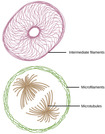
By the end of this section, you will be able to:Describe the cytoskeletonCompare the roles of microfilaments, intermediate filaments, and microtubulesCompare and contrast cilia and flagellaSummarize the differences among the components of prokaryotic cells, animal cells, and plant cells
- Subject:
- Applied Science
- Biology
- Life Science
- Material Type:
- Module
- Date Added:
- 07/10/2017
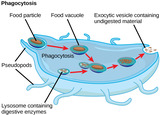
By the end of this section, you will be able to:List the components of the endomembrane systemRecognize the relationship between the endomembrane system and its functions
- Subject:
- Applied Science
- Biology
- Life Science
- Material Type:
- Module
- Date Added:
- 07/10/2017
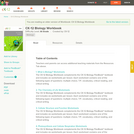
CK-12 Biology Workbook complements its CK-12 Biology book.
- Subject:
- Biology
- Life Science
- Material Type:
- Activity/Lab
- Textbook
- Provider:
- CK-12 Foundation
- Provider Set:
- CK-12 FlexBook
- Author:
- Akre, Barbara
- Blanchette, Jennifer
- Brainard, Jean
- Gray-Wilson, Niamh
- Wilkin, Douglas
- Date Added:
- 03/22/2011
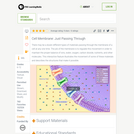
This interactive feature describes some of the most important structures and functions of the cell membrane.
- Subject:
- Life Science
- Material Type:
- Activity/Lab
- Interactive
- Provider:
- PBS LearningMedia
- Provider Set:
- PBS Learning Media: Multimedia Resources for the Classroom and Professional Development
- Author:
- National Science Foundation
- WGBH Educational Foundation
- Date Added:
- 09/26/2003

Welcome! This is the site for the lecture component of Bio1100 D854. This site contains the lecture syllabus and links to the free OER (open educational resource) textbooks that we will be using.
- Subject:
- Biology
- Life Science
- Material Type:
- Full Course
- Provider:
- CUNY
- Provider Set:
- New York City College of Technology
- Author:
- Julie Parato
- Date Added:
- 06/16/2022
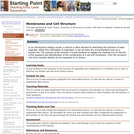
A one page assignment that uses online tutorials to give students a first exposure to the components of a cell and membrane.
- Subject:
- Biology
- Life Science
- Material Type:
- Activity/Lab
- Homework/Assignment
- Lecture Notes
- Simulation
- Provider:
- Science Education Resource Center (SERC) at Carleton College
- Provider Set:
- Starting Point (SERC)
- Author:
- Scott Cooper
- Date Added:
- 08/28/2012
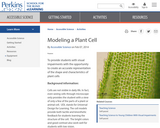
This activity was designed for blind learners, but all types of learners can use it to understand the structure of a plant cell. The purpose of this activity is to create an accurate representation of the shape and characteristics of plant cells. The cell models provide both tactile and kinesthetic feedback for students learning the structure of the cell. The bright colors and good contract also work well for students with low vision.
- Subject:
- Botany
- Life Science
- Material Type:
- Activity/Lab
- Provider:
- Perkins School for the Blind
- Provider Set:
- Accessible Science
- Author:
- Dawn Tamarkin
- Date Added:
- 01/01/2011